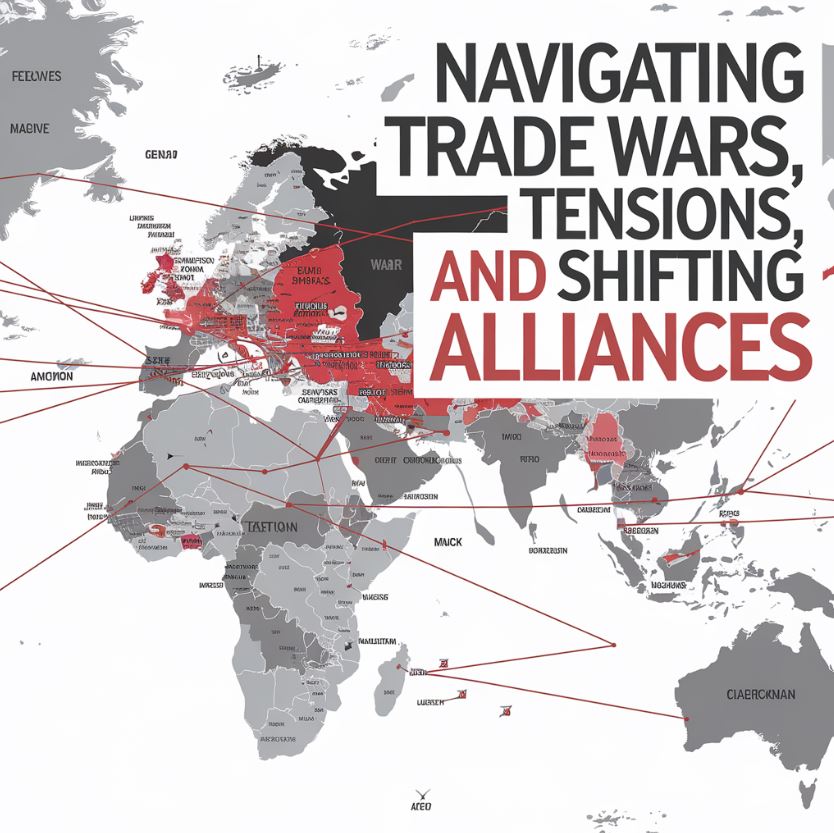As we look toward 2025, Asia’s political landscape is poised for upheaval and uncertainty. From an impending US-China trade war to Taiwan’s precarious position and shifting alliances in the South China Sea, the year promises to be a pivotal one for regional dynamics. Here are five key developments to watch:
1. The Trump-Xi Dynamic Will Shape the Region
The rekindling of diplomatic ties between US President Donald Trump and Chinese President Xi Jinping will be critical for global stability. Trump’s proposed 60% tariffs on Chinese goods loom large, with potential to disrupt over 80% of China’s exports to the US, according to Bloomberg Economics.
China, grappling with economic challenges such as a property downturn and rising unemployment, will likely seek to negotiate. However, the US remains focused on countering China’s military expansion, which has continued to grow in ambition. A swift Trump-Xi summit could set the tone for US-China relations in 2025.
2. Taiwan Faces an Existential Crisis
Taiwan remains a flashpoint in US-China relations. While China views Taiwan as an inseparable part of its territory, the island’s younger generation increasingly identifies as distinct from the mainland. President Lai Ching-te’s administration, deemed separatist by Beijing, faces mounting challenges.
US defense support, while reliable under President Biden, may become unpredictable under Trump. Taiwan must bolster its military and navigate diplomatic complexities to ensure survival amidst escalating tensions.
3. Philippines-US Alliance at a Crossroads
The Philippines’ reliance on the US makes it particularly vulnerable to shifting policies under the Trump administration. Southeast Asia expert Susannah Patton warns that Trump’s transactional approach could weaken Washington’s resolve to assist Manila.
Philippine President Ferdinand Marcos Jr. faces an uphill battle in defending territorial waters in the South China Sea. Maintaining pressure on Beijing while keeping US support intact will be essential for safeguarding navigation rights and sovereignty.
4. North Korea’s Bond with Russia Strengthens
North Korea’s growing partnership with Russia poses significant challenges. Kim Jong Un has vocalized ambitions to expand his nuclear arsenal, with Moscow offering technical and logistical support in exchange for North Korean soldiers fighting in Ukraine.
This partnership could escalate regional instability, especially as Russia leverages all available resources to sustain its efforts in Ukraine. The US will need to address this axis of cooperation with a mix of diplomacy and deterrence.
5. South Korea’s Political Turmoil Benefits Beijing
South Korea’s domestic political instability could tilt its foreign policy. With elections on the horizon, a leadership change might favor warmer ties with Beijing, marking a shift from President Yoon Suk Yeol’s pro-Washington stance.
This potential pivot would benefit China at a time when it seeks to solidify its influence in the region. For the US, maintaining a strong alliance with Seoul will be critical in counterbalancing China’s growing clout.
The Bigger Picture: Risk and Opportunity
Historically, Asia has often been deprioritized in US foreign policy. President Biden’s administration renewed focus on the region, but a second Trump term must build on these efforts to ensure stability.
Geopolitical shifts, economic uncertainties, and strategic competitions make 2025 a decisive year for Asia. Whether the US can effectively manage its alliances and address key flashpoints will shape the future of the region and the world.
Conclusion:
Asia in 2025 is a region on edge. The interplay between major powers, volatile regimes, and shifting alliances will demand astute diplomacy and strong leadership. As trade wars and territorial disputes loom, the stakes for regional stability and global peace have never been higher.
Read More: Good Debt vs. Bad Debt: Debunking the Myth and What You Need to Know

